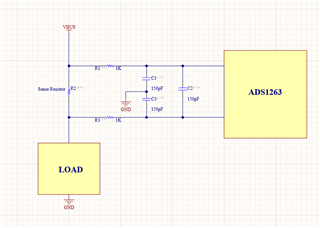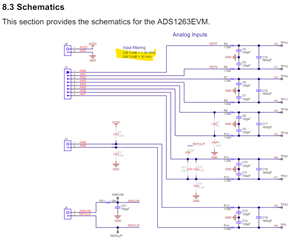Hi,
Our requirement is to measure 1uA to 15A DC current. We are planning to implement it using the ADS1263 ADC part for better resolutions.

We have below queries,
1. Is this circuit correct for implementing current sense resistor?
2. Can you provide a reference for calculating values of C1-C3 and R1, R2?
3. What is the meaning of CM f-3dB= 1.06 MHz and DM f-3dB = 50 kHz present in ADS1263EVM-PDK schematic shown below?

4. Is there any reference application document where ADS1263 is used for the current sense?
Our assumption is that using the ADS1263 part for high-side current sense in differential configuration will provide more accurate results and
measure instantaneous current changes. Please correct me if i'm wrong.

